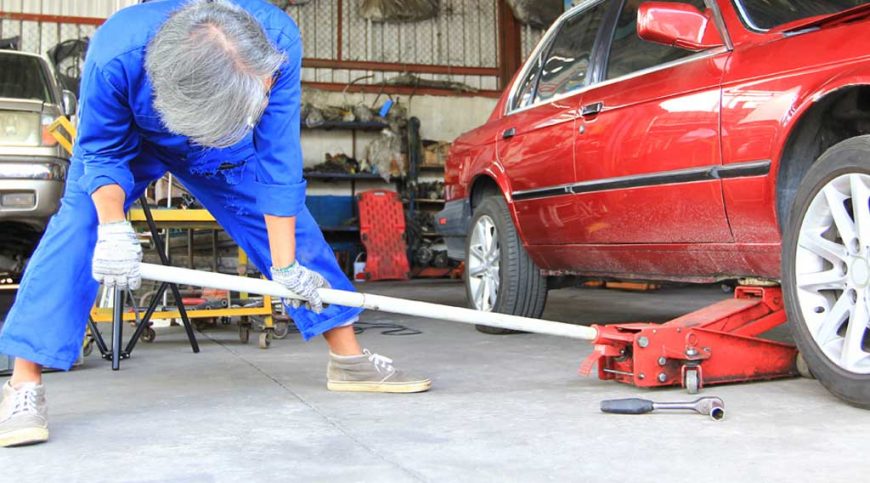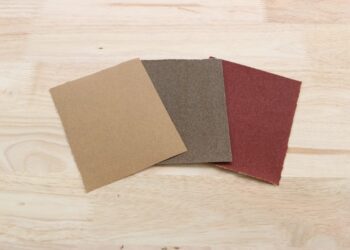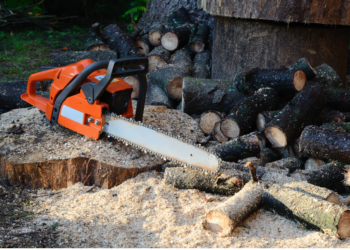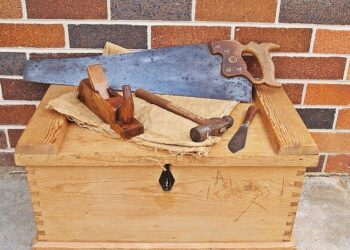There may be incidences when it is required to lift heavy objects like automobile vehicles for underside inspection or to change a tire. For this, we need a tool and it is called a jack. There are different sizes of jacks on the basis of which a jack is able to lift the weight. Depending on the force applied by the jacks, they are divided into the hydraulic jack and mechanical jack. There are two main mechanisms that form the basis of the force applied by the jacks and these are screw threads and hydraulic cylinders.
Hydraulic jacks are of two types, floor jacks, and bottle jacks. These make use of hydraulic fluid and are used in elevators of the buildings. There are two cylinders of different sizes in these jacks and a pipe connects these two. In these cylinders, the hydraulic fluid is forced into the cylinders by a plunger. When the plunger is pulled back, the oil comes into the pump chamber and when the plunger moves forwards, the oil goes back into the cylinders. With the pressure generated due to the movement of the oil, the jack moves.
On the other hand, mechanical jacks make use of physical means by which objects can be raised or lowered. They are found in garages and houses and include car jacks and house jacks.
Uses of Hydraulic Jacks
· Lift heavy vehicles like elevators and bulldozers.
· Used as a door stopper in homes, cars, bikes, etc.
· Used in businesses in which lifting or loading of heavy objects is done.
· In cranes due to which their functionality is increased.
Due to lightweight and easy to use, heavyweights can be lifted with ease with the help of the hydraulic jacks, and also no heavy-duty needs to be employed. With these, almost no effort is required to lift things. Also, the process becomes safe and quick.
How Hydraulic Jack Works?
Hydraulic jacks work on the principle of Pascal’s law which was developed by Blaise Pascal, the French scientist. According to this law, when a liquid is enclosed in a container, the pressure applied at any point is transmitted completely to other parts of the liquid.
When there is a liquid in a container, the walls of the container feel the static pressure which is applied perpendicular within the liquid and to the walls. Pascal principle states that the external pressure applied to this static liquid is distributed to all the directions of the liquid equally.
With the help of the Pascal principle, a formula is developed:
F1 / A1 = F2/A2
In this,
F1 is the force applied on the first piston
A1 is the area of the first piston
F2 is the force applied on the second piston
A2 is the area of the second piston
Working of a Hydraulic jack
In a hydraulic jack, oil is the hydraulic fluid in the cylinder, on which pressure is applied when there is the activation of the plunger. Due to this pressure builds in the cylinders as the one-way suction valve is closed. At this stage, it is required by the pressure to escape due to which the piston connected to the other side with the help of a pipe, will be pulled up. Due to this, anything attached to the plate on the other side will be lifted up. This small force is applied by the pump continuously on the hydraulic fluid until enough pressure is generated in the fluid to lift the weight that is placed on the jack.
Components of a hydraulic jack :
- Buffer or reservoir tank
- Check Valve
- Large or main cylinder
- Pump
- Release valve
- Small cylinder
The hydraulic fluid (oil) is stored in the buffer tank from where oil is supplied to the pump. Also, the oil which is returned is stored in this buffer tank. It protects the hydraulic fluid from impurities and external materials as its walls cool down the oil due to which impurities settle at the bottom of the tank.
The check valve is placed after the pump to prevent reverse rotation of the pump. The function of the check valve is to allow the hydraulic oil to flow in one direction only due to which is also called a non-return valve.
In order to transfer hydraulic fluid from one place to another, the pump is used. The pressure is built in the fluid due to the resistance offered by the pump. In hydraulics, there are positive displacement pumps due to which a fixed amount of hydraulic fluid is transferred from this suction which is not dependent on the amount of the weight to be lifted. In the pump, there should not be the entry of the air, if it occurs then due to aeration, high noise is produced in the pump.
The Reserve valve is used to release the large pressure that is generated in case of pump failure. If this is not done, damages can occur to the jack.
A large cylinder is filled with the hydraulic fluid and on this, the weight to be lifted is placed.
A small cylinder is also filled with oil or hydraulic fluid. This cylinder applies pressure to the large cylinder.
Types of Hydraulic Jack
Two types of hydraulic jacks are present. These are floor jack and bottle jack.
A floor jack is used to lift vehicles like cars. With the help of this jack, tires can be changed easily as hydraulics are present in the floor jacks. There are various sizes available of the floor jack and depending on their size, weights can be lifted. While using this jack, it has to be placed on the ground.
Another type of hydraulic jack is a bottle jack or hand jack. This is used to provide any service to the vehicle or to inspect it. The cylinders in this jack are like milk bottles due to which it has got its name. The main use of such jacks is in the automobile industry. They are also used as cable slicers, stretcher lifts, and load lifters. Working with bottle jacks is easy and comfortable.
Also Read: How Does an Air Conditioner Works?









